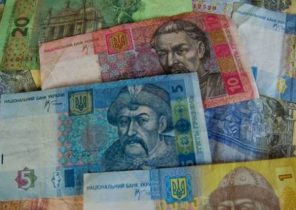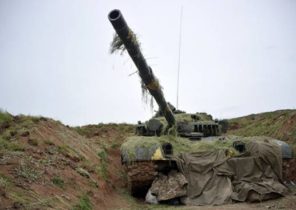“Planning”. This expression for a long time called to mind images of starvation or, at best, long queues in front of empty shops… Global pandemic covid-19 will unexpectedly rejuvenate this fell out of favor tool? Nationalization, tremendous support plans, the suspension of dividend payments — many politicians (even liberal) put the state in a Central place in the total economic mobilization. Whatever it was, the Soviet economy has not ceased to be a Scarecrow. Authoritarian, focused on volumes and inefficient system became a kind of anti-model, and no one was trying to recognize her achievements or consider her difficulties in the context of the past. But now, when climatic imperatives say that the economy should be aimed not only at profit, it is worth noting that this experience promoted further political voluntarism in the economic sphere.
The Soviet model displays the means of production from the sphere of private property. The private sector invests resources to profitable, in his opinion, the industry production, but not committed to working for social needs and national priorities. The purpose of the planning system to replace the chaotic movements of competition with precise engineering calculation. All businesses, from steel plant to collective farms, administratively attached to certain sectors of the economy, which is headed by the Commissioner, later renamed to the Ministry. The annual plan has the force of law. He sets the production volumes of each product. The tasks are distributed among all sectors of the economy, and then at the enterprise level. In practice, for the development of the plan requires a constant exchange of information between the planned center (Gosplan) and the management of enterprises through the line ministries. The state planning Commission needs to organize the supply companies, which would provide their needs and planned production.
Forced industrialization
Almost all prices for goods are fixed. As for wages, there are established norms, but the enterprise can change the earnings premiums and production quotas. Anyway, the total salary mass every year pre-approved by the government. In Soviet enterprises “profit” — the difference between the sales and production cost of the goods — takes the form of a surplus (or deficit), which are also calculated in advance. It must be sent to the center, which carries out major investments. The pricing system incorporates the mechanism of the forced subsidies from profitable to unprofitable sectors of the economy that allows you to invest large amounts of resources in priority areas, without considering the criteria of profitability.
The planning system emerged only in 1928, when the civil war was over, and the property expropriated. And it wasn’t counted wise economists of the program: the methodology and its purpose (forced industrialization) were imposed war and the threat of large-scale armed conflict with the capitalist powers. “Given the possibility of a military attack from capitalist countries the proletarian state, it is necessary in the development of the five-year plan to pay maximum attention to the rapid development of those sectors of the economy in General and industry in particular, which drops out the main role in ensuring the defence and economic stability of the country in wartime”, — stated in the directives passed in 1927, XV Congress of the party.
In rural country that was cut off from foreign capital and was with the diplomatic isolation, the source of resources could be just the peasantry. Rapid industrialization assumed a mass migration of peasants from the villages with the possibility to feed the population. At the moment the Russian peasants themselves consume a large part of its production. The products have reached the cities, drop by drop and almost untaxed. Through collectivization, the Soviet authorities sought to destroy the peasant autarchy. They responded with resistance: from 1929 to 1933 he preferred to slaughter the cattle and cut the crops instead of give away products at bargain prices. This resulted in a terrible famine. Stalin responded by tightening impressment and deportation of the most stubborn. In such a maximum pressure of agricultural surplus doubled from 1928 to 1937. “Collectivization was in some way accelerated the industrialization pushed people from the village, writes economist Robert Allen. Without the collectivization of migration from the countryside to the city would be weaker, city — less and industrial production lower.”
Despite millions of victims, the results were there, if I may say so. In the decade after the launch of the first five-year plan (1929-1933) Soviet production has increased 1.5 times (compared to 1.1 in Western Europe). At the same time economy with a huge proportion of the peasantry as in Russia (about three quarters of the population), have stagnated or lagged behind in development (in the southern part of Latin America, Southeast Asia, middle East) in the context of globalization, which was already distinguished by a marked inequality. By 1941, when the threat of a “military attack” was carried out in practice, the Soviet Union had sufficient industrial support for the organization of counter and the first defeat of Nazi Germany at Stalingrad.
Violent forms of Soviet industrialization linked to a greater extent with its accelerated pace than by routine method. In addition, in the 1930-ies, this system has not formed properly. As notes the historian Eric Hobsbawm, the Soviet economy was more like “a military operation than an economic enterprise.” The strictest discipline coexisted with a complete mess. “By definition, this system sets priorities and carries out General mobilization, — he writes. — Subsequently, these requirements are superimposed on each other and even cancel each other, therefore companies are forced to prioritize. By its nature, the system has relied on “shock”: you need to put unrealistic task to contribute to a superhuman effort.”
In such conditions economic calculation is less important than political order. The fact that the system has caused genuine enthusiasm, without which it certainly would not be able to survive. It provided ordinary people mass education and unprecedented prospects for social mobility. Even in the midst of civil war, the number of youth in schools increased from 3.5 to 5 million. In the 1930-ies was significantly reduced illiteracy: from 50% to 20% of the adult population, especially among women.
The historical situation forced the Soviet government to start mass production of the blast furnaces and tanks. Nevertheless, it immediately drew attention to consumption. What social needs were required to cover? Whether it is capable of the country? If not, how to cope with the shortage and mitigate the political consequences? Had to start from the existing consumption habits or to form new ones? How much to allocate for absolutely necessary, just useful and enjoyable? Finally, how to explain and bridge the gap between reality with its deficit and inequality and pursuing the ideal?
What social needs you need to cover?
These dilemmas was particularly acute in the fashion industry. In the civil war, the Bolsheviks advocated the revolutionary asceticism, including clothing. It was about opposition to the bourgeois fashion, which caused consumers artificial need to keep update your wardrobe. But, for reasons of pragmatism, not everyone should be equally austere… Until the middle of 1930-ies and again during the Second world war was a system of vouchers, which provided supply the most important power of the population. Writes Julie Hessler, “workers” (management, engineers, and other elites) had 125 coupons, which was equivalent to two men’s shirts and three cotton dresses. Employees were given 100 tickets. Dependent people and the students received 80. With regard to rural areas, they receive such items only if needed to “stimulate” agricultural supply.”
As an administrative way to determine in the absence of the production of trousers, shirts and dresses, as well as a number of their models? Statistics of the state planning Commission has determined that the cost of clothing to freeze, starting from a certain level of income: they took the threshold for calculation of norms of consumption per person and the scientific management of the plan. From their point of view, the rules were somewhere between the old world and the new, between the existing demand and needs, which the authorities sought to assemble. “Home models” was requested to ask the fashion trends and transfer prototypes to the factories. Soviet designers have closely followed the Parisian fashion, and they were allowed to adopt useful technologies and motives. Nevertheless aesthetic innovations are often admitted detached from Soviet reality, and rarely ran into mass production. Located at the end of the chain sellers fill the shelves depending on past purchases. The collection is updated slowly. In the early 1970s, 70% of clothes in industrial production is still produced on the old models, often inherited from the Stalin era. Therefore, in 1970-ies was introduced (albeit rather timidly) the means of tracking changes in demand: market research.
Between creativity houses models and old stuff on the shelves clearly there was a contradiction with which society is slow to cope. Many Soviet citizens wore clothes made at home or treated in a clandestine Studio. Power to turn even encouraged home sewing, massively distributed books and patterns in the hope to cope with the deficit. Come down to the fact that such home products are beginning to compete with the public sector. In some ways, it resembles “alternative” the masks themselves have done at home thousands of French people under the benevolent views of the authorities, unable to provide them, even civil servants…
Difficulties in the production of clothing remind of a key problem of any managed economy: as if there are no prices to direct resources in the right place at the right time and without waste? Because of the outstanding growth of the Soviet Union could not immediately be aware of this problem, but with the expansion and complexity of supply chains coordination problems became more and more. Authorities responded by forming a bureaucratic order. In 1932 there were three responsible for the industry Commissariat, and by 1940 they became 32.
Shibashiba under the influx of the tasks of Gosplan focused in 1965 on the commodity and strategic planning. But even this was a document of 11 500 pages 70 volumes… Other 20 000 was assigned to the USSR State Committee for material technical supply (Gossnab) and its agencies. In addition, each physical exchange expected financial transaction. The task fell to the Central Bank, which was circulating enough money for planned sales. All this allows us to understand the number of operations had to coordinate the Soviet administration. The number of indicators that the management of the enterprise was to transfer the supervising administrative authorities, ranged from 2.7 to 3.6 billion.
The planning system has been a huge amount of information, whose quality still left much to be desired. Director usually inflated needs and was silent about had their reserves to avoid shortages, late and insufficient supply, increase of the production plan (as well as in the event of an accident). In an endless series of requests and limited resources, the planning Department preferred production chains. For example, to the requirements of the manufactured plastic factory (this resource is needed for the production of many other products) listened much more attentively than to the demands of apparel factory: lack of plastic might undermine the balance in the industry, and from a lack of pants will only hurt the end consumer. And one can not “vote ruble”, no democratic mechanism does not allow to change or Supplement the decisions of the economic administration. Moreover, the political weight of sector ministries played a big role in making such decisions: the MIC was able to successfully defend their positions, what to say about light industry.
In the result, the Soviet economy suffered from a lack of performance and neglected consumer goods. After geopolitical confrontation has ceased to be exclusively military and covered including this sphere, and Moscow had to involve a lot of money to maintain comparison with the Western economies: more work, materials and funding. However, a huge infusion of capital has given mediocre results. In the 1950s, the annual capital increase by 9.4% gave “only” 5.7% of the additional production. In the early 1960-ies the growth has started to decelerate and stood at around 5.2% for a decade.
To economists asked for the solution: reform was required, but what? Schematically, here confronted each other two schools. In September 1962, the economist yevsei Liberman published in “Pravda” article “Plan, profit, premium”. Profit? The word itself aroused the indignation of his Orthodox colleagues. Lieberman belonged to the Marxist current, which criticized the planning system and maintained a relatively liberal ideas. “A barbecue and terrace” advocated reform of the price system in order to better reflect inherent in every product of labor. They also suggested decentralization of economic decision-making.
The second idea of their work became a source of inspiration for serious change in criteria for the management of the economy in 1965. Since then, the company began to assess on turnover, not amount of production that was supposed to push them to improve product quality. The rent of the center was to provide a more careful use of capital by management. In addition, he was allowed to pay employees bonuses to boost morale. Finally, the Director got more freedom in making necessary, in their opinion, investments and signing contracts with suppliers.
While this reformed course sought to mimic the market, a group of economists-cyberneticists were going to improve the planning system. These specialists of the Central economic-mathematical Institute were inspired by the pioneering work of the inventor of linear programming and the future of the winner of the “Nobel prize in Economics” Leonid Kantorovich. They watched as major American companies, particularly General Motors, have used automation to reduce production costs. They wanted to organize the Soviet economy in the manner of one giant company and wanted to create a giant computer network that would be on the shoulder to settle standing in front of the planned economy is a huge coordination problem. This project involved the Cybernetics in Kiev Viktor Glushkov. One of the most outstanding employees of the Central Economics and mathematics Institute Mykola Fedorenko tried to help him to achieve from the authorities of the formation of the national automated system of calculation and information processing, the germ of what could become the Russian Internet. In particular, he wanted to place the country in 20,000 terminals that would be connected with located in Moscow center.
Although this proposal was based on the observation of the American economy, it is, paradoxically, was to centralize the most, because it was supposed to give the state accurate information and decision-making system, to ensure planning is based on scientific truth. We are not talking about the familiar digital economy. Amazon plan changes depending on the situation. The consumer expresses his preferences on the basis of which the company sets in motion the entire production chain, from Chinese Assembly plants to the French warehouses. The cybernetic utopia in turn forcing manufacturers to carry out plan objectives: prices are set in real time taking into account the decisions of the Party and with the purpose of balancing plan. All resources were used effectively to complete the task.
Neither of the two reforms were not completed. The proposed barbecue and terrace measures were implemented from 1965 to 1969, and only raised tensions in the economy. The situation of enterprises resembled the situation of the French hospitals under the regime of billing. They were required to “return,” although they could not change prices or to develop strategies to attract clients. Furthermore, like hospitals are required to treat all patients seeking, Soviet enterprises were forced to do came from the top “urgent” orders.
The new banking benefits business debts began to grow rapidly. At the same time Soviet plant could not fail: in the event of default, the state Bank had to repay the amount and then bill the state, despite the risk of financial crisis. In the report of the 1968 structure was proposed to increase the “flexibility” of prices of consumer goods or enter the rent received for free housing. Such a reform would be a blow to the socialist social contract, or even led to the abandonment planning. The Director of the state planning Committee Nikolai Baibakov strongly opposed, and the reform was abandoned.
Finally from the project Glushkov was abandoned in 1970. Transmission computer control over prices? Cybernetics was considered naive fool… the Revolt in Novocherkassk in 1962 because of higher prices for milk and meat (in the course of repression killed at least 24 people, but was kept secret until 1992) showed that this political issue is too serious to be entrusted to the mathematicians. In addition, given the computer power of those times, processing of the planned volume of information would take several million years. In the Soviet Union saw the potential of Informatics to solve problems of coordination of economic activities. Ultimately, the power of other algorithms have used. It remains only to put them under people’s control…







